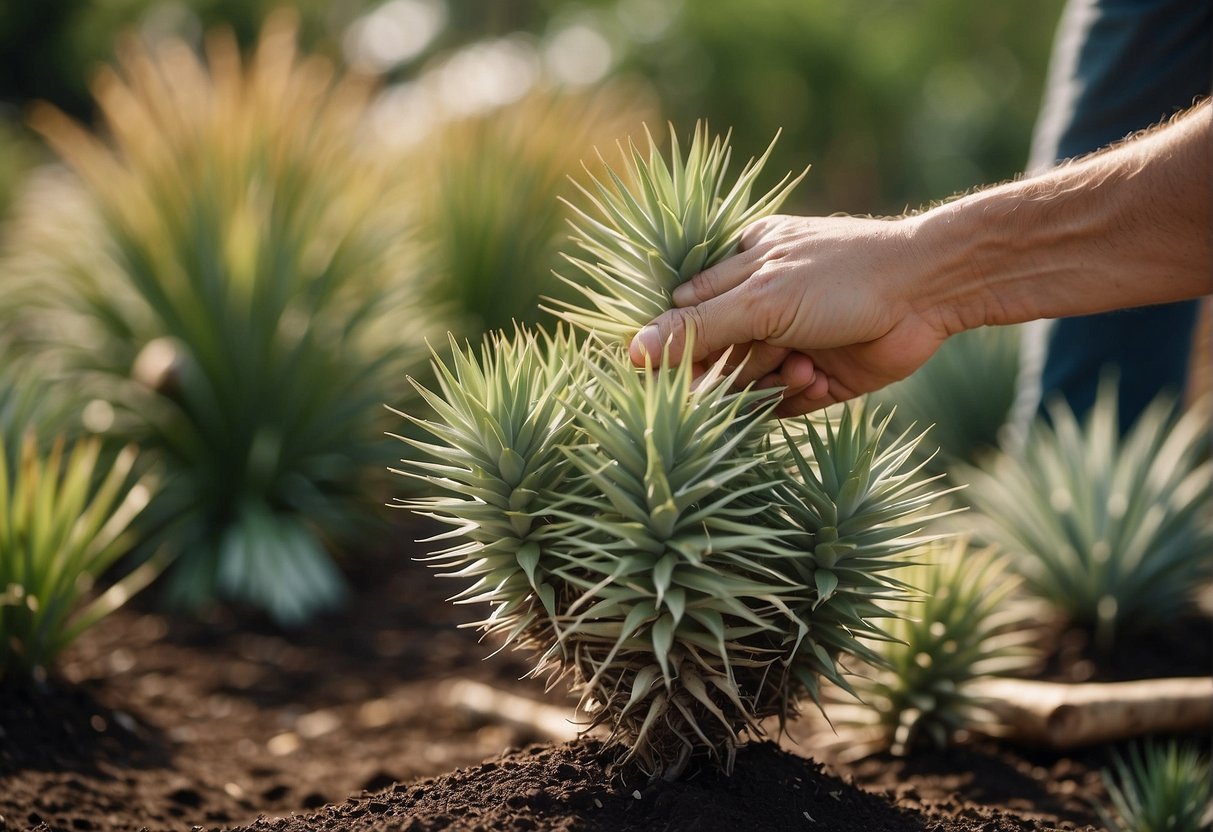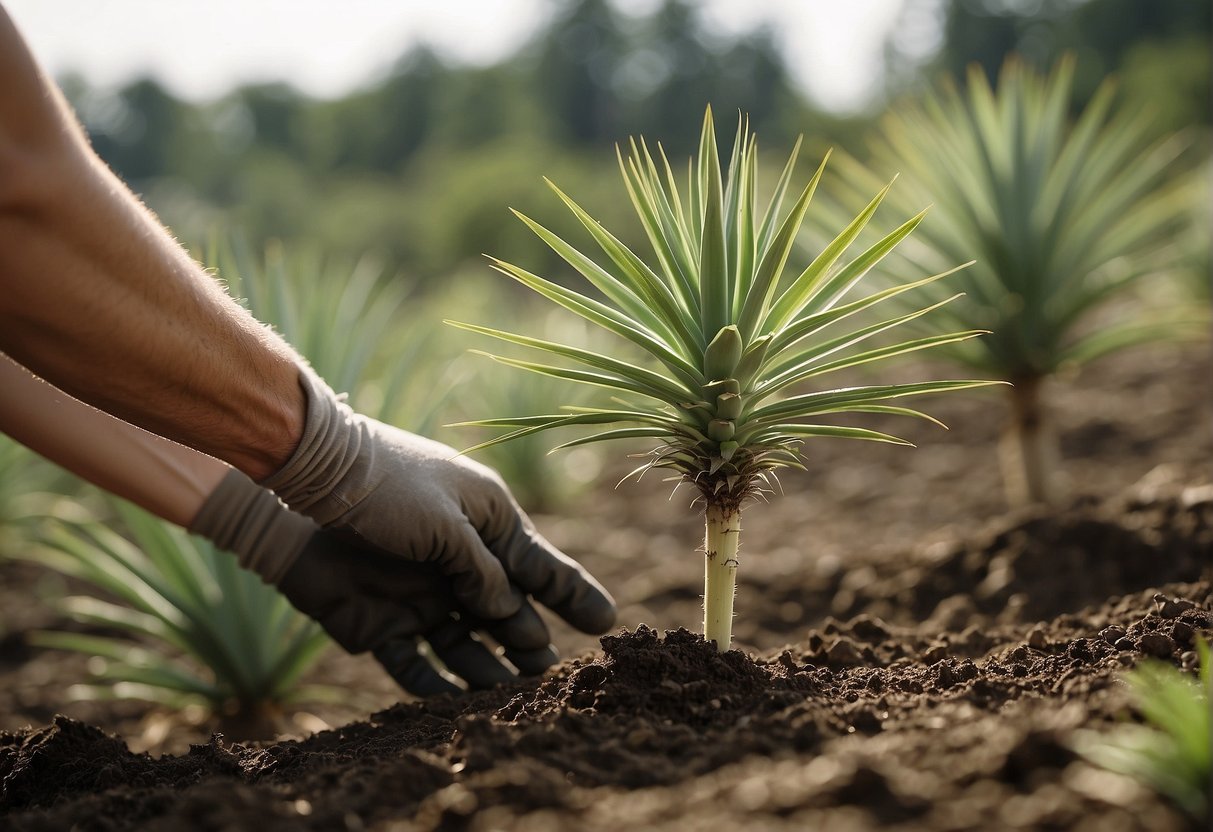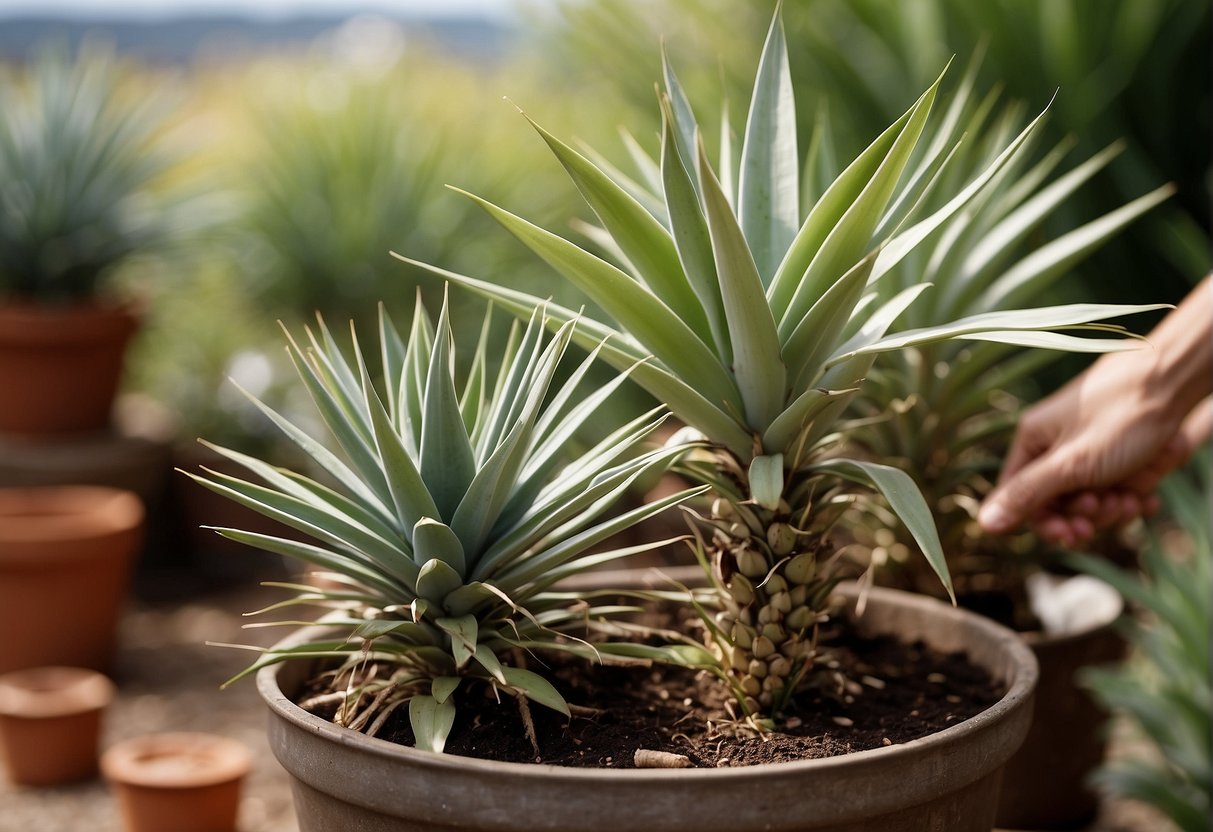When to Lift and Separate Yucca Plants: Expert Tips
If you’re cultivating yucca plants in your outdoor space, you might be curious about the optimal timing to divide and transplant them. Known for their resilience and ability to thrive in dry conditions, yuccas are a favored option for garden landscapes. Nevertheless, they have a tendency to grow too close together and become excessively large, affecting their vitality and aesthetic appeal negatively. In this piece, we’ll delve into the most effective methods for dividing and repositioning yucca plants, aiming to preserve their health and visual charm.

Understanding yucca plant care is important before attempting to lift and separate them. Yuccas are hardy plants that thrive in well-draining soil and full sun. They are also resistant to pests and diseases, making them an ideal choice for low-maintenance gardens. However, they do require occasional pruning and maintenance to keep them looking their best. By understanding the basic care requirements of yucca plants, you can ensure that they are healthy and ready for lifting and separating when the time comes.
When it comes to lifting and separating yucca plants, there are a few key things to keep in mind. Timing is important, as yuccas should be lifted and separated during their dormant period in late fall or early winter. You will also need to prepare the new planting site by digging a hole and adding compost or other organic matter to the soil. By following these steps, you can successfully lift and separate your yucca plants and ensure their continued health and beauty.
Key Takeaways
- Yucca plants are low-maintenance and drought-tolerant, but require occasional pruning and maintenance.
- Yuccas should be lifted and separated during their dormant period in late fall or early winter.
- Prepare the new planting site by digging a hole and adding compost or other organic matter to the soil.
Understanding Yucca Plant Care
If you are looking for an easy-to-care-for plant that can add a touch of green to your garden, yucca plants are a great choice. These hardy plants are drought tolerant and can thrive in a variety of temperatures and soil conditions. However, to ensure that your yucca plants are healthy and happy, it is important to understand their care requirements.
Optimal Growing Conditions
Yucca plants prefer well-drained soil and plenty of sunlight. They can tolerate a range of temperatures, but they do best in warm summer temperatures and cooler winter temperatures. If you live in an area with harsh winters, you may want to consider bringing your yucca plants indoors for the season.
Watering and Feeding
Yucca plants are drought tolerant and do not require frequent watering. In fact, overwatering can lead to root rot and other issues. It is best to water your yucca plants once a month or when the soil is dry to the touch. When it comes to feeding, yucca plants do not require much fertilizer. A monthly dose of a balanced fertilizer can help keep your plants healthy.
Common Pests and Diseases
Yucca plants are generally low maintenance and are not prone to many pests and diseases. However, they can be susceptible to mealybugs and spider mites. If you notice any signs of pest infestation, it is important to act quickly to prevent the spread of the infestation. In terms of diseases, yucca plants can be affected by root rot if they are overwatered or planted in poorly draining soil.
Overall, yucca plants are a great choice for gardeners looking for a low-maintenance, drought tolerant plant. By understanding their care requirements, you can ensure that your yucca plants thrive and add a touch of green to your garden.
Lifting and Separating Yucca Plants

If you have a mature yucca plant, it may be time to consider lifting and separating it. This process can help promote healthy growth and prevent overcrowding. Here are the steps you need to follow to successfully lift and separate your yucca plant.
Best Time for Division
The best time to lift and separate yucca plants is in the early spring, just before the growing season begins. This allows the plant to establish itself in its new location before the heat of summer arrives. If you live in an area with mild winters, you may also be able to divide your yucca plant in the fall.
Step-by-Step Division Process
- Dig around the yucca plant, making sure to stay at least 6 inches away from the base of the plant.
- Use a sharp spade or knife to separate the root system into smaller sections. Each section should have at least one offset, or offshoot.
- Gently lift the sections out of the soil and shake off any excess dirt.
- If the offsets are large enough, you can plant them directly in the ground. If they are smaller, you may want to plant them in containers until they have developed a strong root system.
- Water the newly planted yucca plants thoroughly and add a layer of compost to the soil surface to promote root development.
Post-Division Care
After you have divided your yucca plant, it is important to monitor its growth and provide proper care. Make sure to water the plants regularly, especially during the first few weeks after planting. You should also provide some shade for the newly planted yucca plants until they have become established.
Regular maintenance is also important for the health of your yucca plants. Remove any dead or damaged leaves and make sure to keep the soil moist. With proper care, your newly separated yucca plants should thrive in their new location.
Frequently Asked Questions

How can you effectively divide a mature yucca plant?
To divide a mature yucca plant, you will need to use a sharp, clean knife or pruning shears. Begin by removing any dead or damaged leaves from the plant. Then, carefully cut through the root ball, dividing the plant into smaller sections. Be sure to leave enough roots attached to each section to support the plant.
What is the best method to propagate yucca side shoots?
The best method to propagate yucca side shoots is to carefully remove them from the parent plant and plant them in a well-draining soil mix. Make sure to keep the soil moist but not waterlogged, and provide plenty of bright, indirect sunlight.
What are the steps to separate yucca pups from the parent plant?
To separate yucca pups from the parent plant, gently dig around the base of the pup with a small shovel or trowel. Then, carefully pull the pup away from the parent plant, taking care not to damage the roots. Once the pup has been removed, plant it in a well-draining soil mix and water thoroughly.
Is it possible to plant yucca cuttings directly into soil?
Yes, it is possible to plant yucca cuttings directly into soil. Simply cut a healthy stem from the parent plant and remove any leaves from the bottom third of the stem. Then, plant the cutting in a well-draining soil mix and water thoroughly.
When is the ideal time to transplant a yucca plant?
The ideal time to transplant a yucca plant is in the spring or fall, when temperatures are mild and the plant is not actively growing. This will help to minimize stress on the plant and increase the chances of successful transplantation.
How should you remove a yucca plant safely from the ground?
To remove a yucca plant safely from the ground, begin by digging around the base of the plant with a shovel or trowel. Once you have loosened the soil around the plant, gently pull the plant out of the ground, taking care not to damage the roots. If the plant is too large to lift, you may need to cut it into smaller sections before removing it from the ground.

